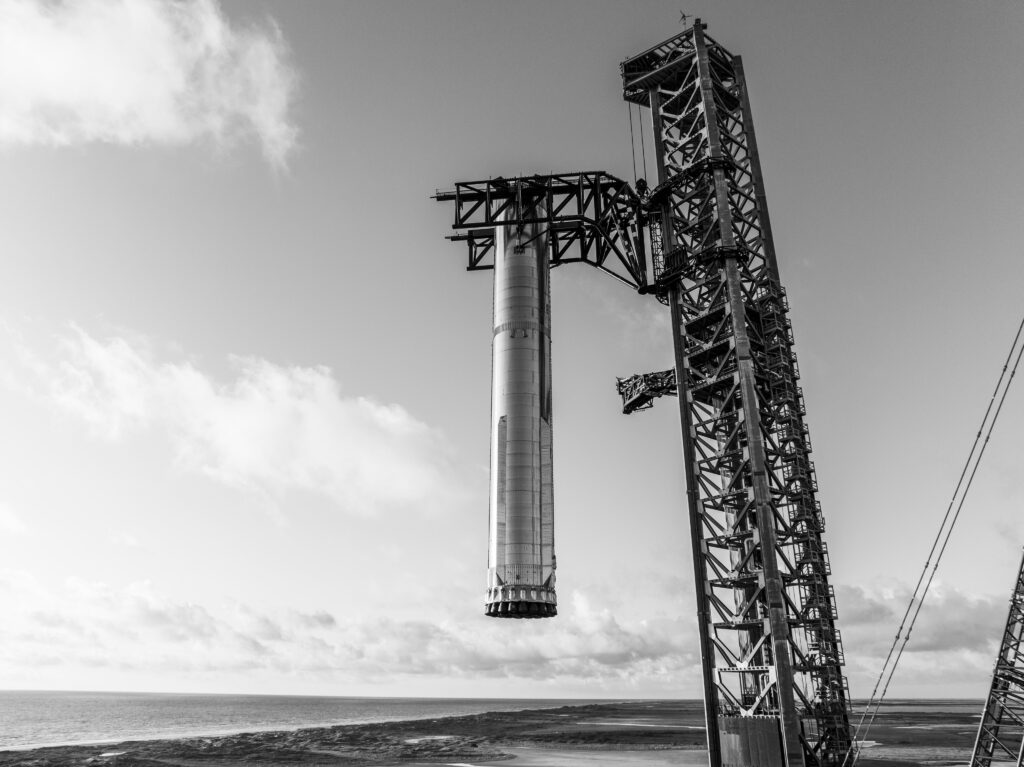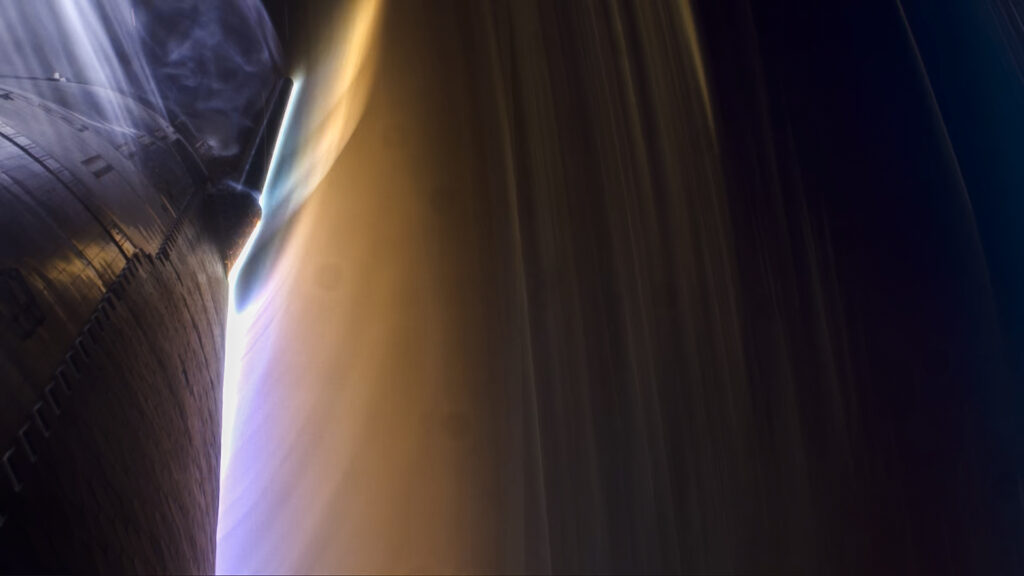On June 13, SpaceX will conduct its fifth test of the Starship super heavy rocket. The key goal of the test is to “catch” the Super Heavy booster returning to Earth. A huge Mechazilla tower equipped with mechanical arms will be used for this purpose.
Objectives of Starship’s fifth flight
The previous Starship test was exceptionally successful for SpaceX. The company managed to solve several fundamental problems at once. One of them was the successful separation of the Super Heavy booster, which then performed a partial re-entry maneuver and splashed down in the waters of the Gulf of Mexico (the company later recovered its fragments from the bottom).

Another important milestone was the testing of the Starship’s heat shield. Despite the fact that a number of tiles broke off from the spacecraft, it managed to survive the re-entry stage and successfully splash down in the waters of the Indian Ocean.
All of this gave SpaceX the opportunity to move on to the next key task needed to make Starship a truly reusable space system. This is about the return and reuse of the Super Heavy booster. In the case of Falcon 9 and Falcon Heavy rockets, it is solved by landing their first stages on land pads or barges. However, Super Heavy is much larger and more massive than them. Therefore, the company took a different approach.
The Mechazilla rotating tower will be used to return the booster. It is equipped with mechanical arms that will have to catch the stage returning to the spaceport. This operation requires precision in execution. But if SpaceX can perfect the procedure, it will significantly improve the reliability of the landing.

Returning the Super Heavy is not the only objective of the upcoming test. Another key objective is to test the Starship’s heat shield. Since the previous flight, SpaceX engineers have made a number of changes to its design. But how successfully they managed to cope with this task will only become clear when the spacecraft enters the Earth’s atmosphere.
Live broadcast of the Starship launch
Starship is scheduled for launch on June 13. The 60-minute window for the Starship’s flight will open at 7:00 AM CDT. The event will be broadcast live by the company on the X social network (former Twitter).
Watch Starship’s fifth flight test https://twitter.com/i/broadcasts/1RDGlyognOgJL
— SpaceX (@SpaceX) October 12, 2024
Alternate broadcasts of the launch will also be provided on Youtube.
The Starship’s fifth flight will be carried out according to the following scheme. The Super Heavy and Starship prototype will be launched from the SpaceX test site near the Texas village of Boca Chica. After separation, the booster will perform a return maneuver and return to the spaceport where it will be picked up by Mechazilla.
As for the Starship prototype, it will be accelerated to a slightly lower speed than the first space velocity. This ensures that in case of loss of control, the spacecraft won’t stay in orbit in any case, but will fall into the ocean. Starship will move on a suborbital trajectory, cross the Atlantic, fly over Africa, and then begin to enter the dense layers of the atmosphere. This will happen about 47 minutes after launch.

Next, the spacecraft will make a controlled descent in the atmosphere, gradually reduce its speed and, if all goes successfully, will make a soft splashdown in the waters of the Indian Ocean with the help of engines.


